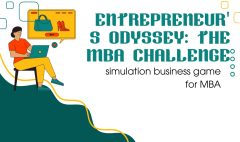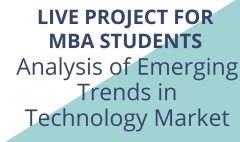Fostering Innovation
Fostering Innovation
Discover how MBA graduates can cultivate a culture of knowledge sharing and continuous learning within organizations, driving innovation, and competitive advantage.
Introduction: In the ever-evolving business landscape, the ability for an organization to innovate hinges on its culture. For MBA graduates stepping into or moving up the leadership ladder, understanding how to foster an environment where knowledge sharing and continuous learning are embedded in the company’s DNA is crucial. This culture is not just about staying updated; it’s about catalyzing innovation that keeps the organization ahead of the curve.
The Symbiosis of Knowledge Sharing and Innovation:
- Intellectual Cross-pollination: How open dialogue and the exchange of ideas breed groundbreaking innovations.
- Breaking Silos, Building Bridges: Encouraging interdisciplinary cooperation and dismantling barriers to free-flowing information. (Resource: Deloitte Insights – https://www2.deloitte.com/insights)
Building a Culture of Continuous Learning:
- Lifelong Learning as a Norm: Implementing policies that encourage continuous skill development and education.
- Learning Opportunities: Offering workshops, courses, and seminars relevant to employees’ roles and industry advancements. (Resource: LinkedIn Learning – https://www.linkedin.com/learning/)
Technological Enablers:
- Digital Platforms: Using technology to facilitate knowledge sharing through internal forums, databases, and social networks.
- Collaborative Tools: Leveraging software that enables team collaboration and idea management. (Resource: Slack Technologies – https://slack.com/)
Incentivizing Knowledge Sharing:
- Recognition and Rewards: Creating incentive programs that recognize individuals who contribute significantly through knowledge sharing.
- Career Advancement: How contributing to a learning environment can influence professional growth. (Resource: Gallup Blog – https://www.gallup.com/workplace/)
Measuring the Impact:
- Innovation Metrics: Establishing parameters to assess the direct and indirect impacts of a knowledge-sharing culture on innovation.
- Employee Engagement and Retention: Analyzing how a culture of continuous learning influences employee satisfaction and loyalty. (Resource: SHRM – https://www.shrm.org/)
Real-world Examples:
- Case Studies: Instances where organizations have thrived due to a strong culture of knowledge sharing and continuous learning.
The Role of Leadership:
- Leading by Example: How leaders can set the tone for a knowledge-sharing environment.
- Open-door Policy: Encouraging accessibility and open communication between employees and management. (Resource: Forbes – https://www.forbes.com/leadership/)
Conclusion: For MBAs, leading in the modern world means recognizing that a company’s most valuable asset is its collective knowledge. By fostering a culture where information is freely shared and continuous learning is promoted, they can drive innovation that propels the organization forward in a competitive marketplace.








